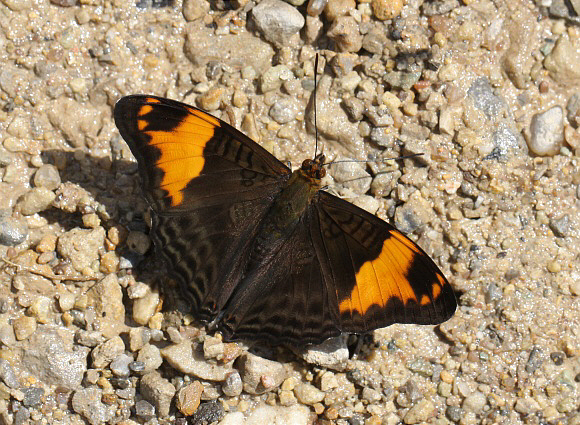
Introduction
Adelpha butterflies are colloquially known as ‘Sisters’. In terms of appearance they are reminiscent of the White Admirals (Limenitis) of Eurasia, and share with them a fondness for flitting gracefully around the lower branches of trees in the dappled sunlight of the forest.
There are 85 species of Adelpha, all but two of which are confined to Central or South America. The butterflies are characterised by the distinctive blackish marbled pattern overlaid on a brown ground color; and by the presence of a broad orange or white band on the forewings. Most species also have a white median band on the hindwings.
While it is easy to recognize the genus, identifying an individual species can be difficult, particularly as there are many misidentified or mislabelled specimens in certain entomological books. The only reliable identification resource is “The genus Adelpha” by Willmott. Accurate identification requires careful examination of the configuration of orange markings in the subapical area on the forewing. In a large number of cases it is also essential to examine the underside patterning, by which means otherwise similar species can be distinguished.
Adelpha ximena occurs from Venezuela to Bolivia and across much of Brazil. It is rare north of the equator, but is not uncommon in Peru and Bolivia.
Habitats
This butterfly is found in primary rainforest at elevations below about 1200m in the eastern Andes, and throughout Amazonia.
Lifecycle
I have no data specific to ximena. The following generalizations apply to the genus Adelpha: The eggs of most species are white or pale green, and are laid singly on leaves of the food plants which include Rubiaceae, Moraceae, Urticaceae, Verbenaceae, Melastomaceae, Bombacaceae, Ulmaceae, Piperaceae, Tiliaceae, or Ericaceae according to species. The young larvae nibble away at the tips of leaves, leaving the midrib projecting.
They construct a chain of frass along the midrib and rest at the end of it. The frass chains appear to act as a deterrent to ants, spiders, and parasitoids which find it difficult to walk on them. When fully grown the larvae are cryptically coloured and resemble bird droppings, mossy twigs or bits of curled up dead leaf. They have 2 rows of conspicuous spines along their backs, those on the first two segments being enlarged and directed forward, while the third pair are directed backward. The pupae, which are suspended by the cremaster, are in some species green or brown, while others are entirely silver, and shiny. The pupae of some species are decorated with numerous spikes and projections, and sometimes have very prominent palpi.
Adult behaviour
Like most Adelpha species this butterfly is usually seen singly or in small groups. Males can often be found in mixed Nymphalid aggregations imbibing moisture on riverbanks or sunny forest tracks. They also feed at dung, urine soaked soil and decomposing fruit on the forest floor; and prefer to feed in dappled sunlight, avoiding exposed river beaches.
